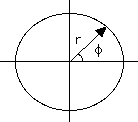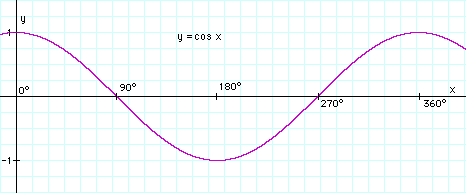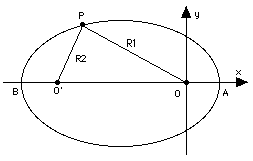|
to Galileo Kepler's Laws (For teachers) and First Law Newtonian Mechanics |
As already noted, other ways exist for labeling points in the plane. For instance, a point P may be labeled by its distance r from a central point O ("origin") and the angle φ (or Greek f, also written φ) which the line OP makes with some standard direction. Such "polar coordinates" (drawing on the left, below) are the ones best suited for describing planetary motion. The Ellipse in Polar CoordinatesAgain, if all the values of (r, φ) of a curve are related by some equation which can be symbolically written r = r(φ) then the function r(f) is said to be the equation of the line, in polar coordinates. The simplest function is a constant number a, giving the line r = a 
The value of r equals a for any value of φ. That gives a circle around the origin, its radius equal to a, shown in the drawing on the right above. The EllipseConsider next the curve whose equation is r = a(1– e2) / (1+ e cos φ) where the eccentricity e is a number between 0 and 1. If e = 0, this is clearly the circle encountered earlier. |

